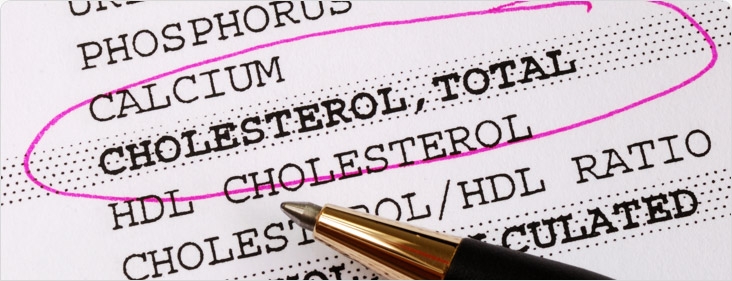
All About Cholesterol
Know your cholesterol level, and understand the difference between good and bad cholesterol
WHAT IS CHOLESTEROL?
Cholesterol is a waxy, fat-like substance that belongs to a class of molecules called steroids. Cholesterol is in many foods and it is also made by our bodies; it is in the blood and in all the body’s cells. Your body needs it to make and maintain cell membranes, sex hormones, and bile salts, as well as to convert sunlight to vitamin D.
Some cholesterol attaches to artery walls as fatty streaks, deposits that can decrease blood flow. If the artery narrows too much, it can stop or restrict blood flow—when this happens, the blood can’t get oxygen to vital tissues. This causes cells to die. If this happens in the coronary artery, it will cause a heart attack; if it happens in the brain, it will cause a stroke.
UNDERSTANDING CHOLESTEROL LEVELS
Cholesterol levels are determined, in part, by what you eat. Some people, however, are born more likely to develop high levels of cholesterol. If your parents have high cholesterol, you need to be tested to see if your cholesterol levels are also high.
It’s important to know your cholesterol level. High blood cholesterol raises your risk for heart disease. Your blood cholesterol should be below 200 mg/dL; 200 mg/dL to 239 mg/dL is borderline, more than 240 mg/dL is high. Your cholesterol level determines how often you need your cholesterol checked. It helps your healthcare provider to determine whether changes in your diet are warranted and whether you need medicine to help. If you have not had your cholesterol checked, please do so.
TYPES OF CHOLESTEROL
There are 2 main types of cholesterol. High-density lipoprotein (HDL) cholesterol helps keep you safe from heart disease. High HDL (60 and above) is good; HDL below 40 mg/dL is low. Low-density lipoprotein (LDL) has the opposite effect: low is good; below 100 mg/dL is best. LDL 190 mg/dL or above is very high. Scientists are still learning how diet and exercise can raise HDL and lower LDL. The methods that lower total cholesterol seem to help maintain HDL and LDL levels as well.
Eating less fat and cholesterol can help you control your cholesterol level. Cholesterol is found in foods from animals, like meat and eggs, but not in foods from plant sources. Physical activity can also help control
your cholesterol.
